Cord Blood Association & STEM CELLS Translational Medicine
STEM CELLS Translational Medicine® is the official journal of the Cord Blood Association (CBA).
The Cord Blood Association is an international nonprofit organization that promotes both public and family cord blood banking and accelerates the use of cord blood and perinatal tissues to benefit patients and advance medicine. Under the leadership of section co-editors, Joanne Kurtzberg, MD, and Karen K. Ballen, MD, STEM CELLS Translational Medicine encourages original research and concise review article submissions. For information on submitting cord blood research view our Call for Papers: Cord Blood page here.
Browse below for the latest research on cord blood.
Cord Blood Articles
Human umbilical cord mesenchymal stem cell-derived exosomes promote osteogenesis in glucocorticoid-induced osteoporosis through PI3K/AKT signaling pathway-mediated ferroptosis inhibition
Zhi-Meng Zhao and others
Stem Cells Translational Medicine, Volume 14, Issue 3, March 2025, szae096, https://doi.org/10.1093/stcltm/szae096
 Glucocorticoid-induced osteoporosis (GIOP), the most common cause of secondary osteoporosis, is characterized by significant bone loss, decreased bone quality, and increased fracture risk. The current treatments for GIOP have several drawbacks. Exosomes are vital for cellular processes. However, ...
Glucocorticoid-induced osteoporosis (GIOP), the most common cause of secondary osteoporosis, is characterized by significant bone loss, decreased bone quality, and increased fracture risk. The current treatments for GIOP have several drawbacks. Exosomes are vital for cellular processes. However, ...
A Randomized, Placebo-Controlled, Phase II Trial of Intravenous Allogeneic Non-HLA Matched, Unrelated Donor, Cord Blood Infusion for Ischemic Stroke
Daniel T Laskowitz and others
Stem Cells Translational Medicine, Volume 13, Issue 2, February 2024, Pages 125–136, https://doi.org/10.1093/stcltm/szad080
 Stroke remains a leading cause of death and disability in the US, and time-limited reperfusion strategies remain the only approved treatment options. To address this unmet clinical need, we conducted a phase II randomized clinical trial to determine whether intravenous infusion of banked, non-HLA ...
Stroke remains a leading cause of death and disability in the US, and time-limited reperfusion strategies remain the only approved treatment options. To address this unmet clinical need, we conducted a phase II randomized clinical trial to determine whether intravenous infusion of banked, non-HLA ...
Long-Term Stability of Cord Blood Units After 29 Years of Cryopreservation: Follow-Up Data From the José Carreras Cord Blood Bank
Stefanie Liedtke and others
Stem Cells Translational Medicine, Volume 13, Issue 1, January 2024, Pages 30–42, https://doi.org/10.1093/stcltm/szad071
 The José Carreras Cord Blood Bank (CBB) located in Düsseldorf as of today stores 21 215 active cryopreserved cord blood units (CBUs) applicable as a source for hematopoietic stem cell (HSC) transplantation. Since the success of transplantation outcomes is mainly dependent on the cord blood quality, ...
The José Carreras Cord Blood Bank (CBB) located in Düsseldorf as of today stores 21 215 active cryopreserved cord blood units (CBUs) applicable as a source for hematopoietic stem cell (HSC) transplantation. Since the success of transplantation outcomes is mainly dependent on the cord blood quality, ...
The Antioxidant TEMPOL Protects Human Hematopoietic Stem Cells From Culture-Mediated Loss of Functions
Elia Henry and others
Stem Cells Translational Medicine, Volume 12, Issue 10, October 2023, Pages 676–688, https://doi.org/10.1093/stcltm/szad049
 In a steady state, hematopoietic stem cells (HSC) exhibit very low levels of reactive oxygen species (ROS). Upon stress, HSC get activated and enter into proliferation and differentiation process to ensure blood cell regeneration. Once activated, their levels of ROS increase, as messengers to ...
In a steady state, hematopoietic stem cells (HSC) exhibit very low levels of reactive oxygen species (ROS). Upon stress, HSC get activated and enter into proliferation and differentiation process to ensure blood cell regeneration. Once activated, their levels of ROS increase, as messengers to ...
Unrelated Donor Cord Blood Transplantation in Children: Lessons Learned Over 3 Decades
Joanne Kurtzberg and others
Stem Cells Translational Medicine, Volume 12, Issue 1, January 2023, Pages 26–38, https://doi.org/10.1093/stcltm/szac079
 Four decades ago, Broxmeyer et al. demonstrated that umbilical cord blood (CB) contained hematopoietic stem cells (HSC) and hypothesized that CB could be used as a source of donor HSC for rescue of myeloablated bone marrow. In 1988, Gluckman et al. reported the first successful matched sibling cord ...
Four decades ago, Broxmeyer et al. demonstrated that umbilical cord blood (CB) contained hematopoietic stem cells (HSC) and hypothesized that CB could be used as a source of donor HSC for rescue of myeloablated bone marrow. In 1988, Gluckman et al. reported the first successful matched sibling cord ...
Identification and Re-consent of Existing Cord Blood Donors for Creation of Induced Pluripotent Stem Cell Lines for Potential Clinical Applications
Keren M Abberton and others
Stem Cells Translational Medicine, Volume 11, Issue 10, October 2022, Pages 1052–1060, https://doi.org/10.1093/stcltm/szac060
 We aim to create a bank of clinical grade cord blood-derived induced pluripotent stem cell lines in order to facilitate clinical research leading to the development of new cellular therapies. Here we present a clear pathway toward the creation of such a resource, within a strong quality framework, ...
We aim to create a bank of clinical grade cord blood-derived induced pluripotent stem cell lines in order to facilitate clinical research leading to the development of new cellular therapies. Here we present a clear pathway toward the creation of such a resource, within a strong quality framework, ...
Augmented Production of Platelets From Cord Blood With Euchromatic Histone Lysine Methyltransferase Inhibition
Yiying Liu and others
Stem Cells Translational Medicine, Volume 11, Issue 9, September 2022, Pages 946–958, https://doi.org/10.1093/stcltm/szac048
 Cord blood hematopoietic stem/progenitor cells (CB-HSPCs) have emerged as a promising supply for functional platelets to potentially alleviate the increasing demand for platelet transfusions, but the clinical application has been limited by the undefined molecular mechanism and insufficient ...
Cord blood hematopoietic stem/progenitor cells (CB-HSPCs) have emerged as a promising supply for functional platelets to potentially alleviate the increasing demand for platelet transfusions, but the clinical application has been limited by the undefined molecular mechanism and insufficient ...
Contamination Rate of Cryopreserved Umbilical Cord Blood Is Inversely Correlated with Volume of Sample Collected and Is also Dependent on Delivery Mode
Susanne Reuther and others
Stem Cells Translational Medicine, Volume 11, Issue 6, June 2022, Pages 604–612, https://doi.org/10.1093/stcltm/szac020
 Cord blood (CB) collected at birth has become a valuable stem cell source for hematopoietic stem cell transplantation (HSCT). However, the collection of umbilical cord blood always bears a risk of microbiological contamination, both in vaginal birth and in cesarean section. A total of 10 054 ...
Cord blood (CB) collected at birth has become a valuable stem cell source for hematopoietic stem cell transplantation (HSCT). However, the collection of umbilical cord blood always bears a risk of microbiological contamination, both in vaginal birth and in cesarean section. A total of 10 054 ...
Transient Inhibition of the JNK Pathway Promotes Human Hematopoietic Stem Cell Quiescence and Engraftment
Huangfan Xie and others
Stem Cells Translational Medicine, Volume 11, Issue 6, June 2022, Pages 597–603, https://doi.org/10.1093/stcltm/szac019
 The widespread clinical application of cord blood (CB) for hematopoietic stem cell (HSC) transplantation is limited mainly by the inadequate number of hematopoietic stem and progenitor cells (HSPCs) in single CB units, which results in unsuccessful or delayed engraftment in recipients. The ...
The widespread clinical application of cord blood (CB) for hematopoietic stem cell (HSC) transplantation is limited mainly by the inadequate number of hematopoietic stem and progenitor cells (HSPCs) in single CB units, which results in unsuccessful or delayed engraftment in recipients. The ...
Transcriptional and functional characterization of neonatal circulating Innate Lymphoid Cells
Sabrina Bianca Bennstein and others
Stem Cells Translational Medicine, Volume 10, Issue 6, June 2021, Pages 867–882, https://doi.org/10.1002/sctm.20-0300
 Innate lymphoid cells (ILCs), comprising ILC1, 2, and 3 subpopulations, play unique roles in maintaining microbiome homeostasis, mucosal tissue integrity, and control of inflammation. So far, their characterization is dominantly based on tissue-resident ILCs, whereas little information is available ...
Innate lymphoid cells (ILCs), comprising ILC1, 2, and 3 subpopulations, play unique roles in maintaining microbiome homeostasis, mucosal tissue integrity, and control of inflammation. So far, their characterization is dominantly based on tissue-resident ILCs, whereas little information is available ...
Worldwide survey on key indicators for public cord blood banking technologies: By the World Marrow Donor Association Cord Blood Working Group
Monique Jöris and others
Stem Cells Translational Medicine, Volume 10, Issue 2, February 2021, Pages 222–229, https://doi.org/10.1002/sctm.20-0246
 The Cord Blood Working Group of the World Marrow Donor Association created a survey for cord blood banks (CBBs) aimed to identify and understand the main technical procedures currently used by public CBBs worldwide regarding cord blood units (CBUs) available for unrelated hematopoietic stem cell ...
The Cord Blood Working Group of the World Marrow Donor Association created a survey for cord blood banks (CBBs) aimed to identify and understand the main technical procedures currently used by public CBBs worldwide regarding cord blood units (CBUs) available for unrelated hematopoietic stem cell ...
Human cord blood-derived regulatory T-cell therapy modulates the central and peripheral immune response after traumatic brain injury
Henry W. Caplan and others
Stem Cells Translational Medicine, Volume 9, Issue 8, August 2020, Pages 903–916, https://doi.org/10.1002/sctm.19-0444
 Traumatic brain injury (TBI) causes a profound inflammatory response within the central nervous system and peripheral immune system, which contributes to secondary brain injury and further morbidity and mortality. Preclinical investigations have demonstrated that treatments that downregulate ...
Traumatic brain injury (TBI) causes a profound inflammatory response within the central nervous system and peripheral immune system, which contributes to secondary brain injury and further morbidity and mortality. Preclinical investigations have demonstrated that treatments that downregulate ...
Autologous cord blood cell infusion in preterm neonates safely reduces respiratory support duration and potentially preterm complications
Zhuxiao Ren and others
Stem Cells Translational Medicine, Volume 9, Issue 2, February 2020, Pages 169–176, https://doi.org/10.1002/sctm.19-0106
 Preterm birth and its complications are the leading cause of neonatal death. The main underlying pathological mechanisms for preterm complications are disruption of the normal maturation processes within the target tissues, interrupted by premature birth. Cord blood, as a new and convenient source ...
Preterm birth and its complications are the leading cause of neonatal death. The main underlying pathological mechanisms for preterm complications are disruption of the normal maturation processes within the target tissues, interrupted by premature birth. Cord blood, as a new and convenient source ...
Human Cord Blood-Derived Unrestricted Somatic Stem Cell Infusion Improves Neurobehavioral Outcome in a Rabbit Model of Intraventricular Hemorrhage
Govindaiah Vinukonda and others
Stem Cells Translational Medicine, Volume 8, Issue 11, November 2019, Pages 1157–1169, https://doi.org/10.1002/sctm.19-0082
 Intraventricular hemorrhage (IVH) is a severe complication of preterm birth, which leads to hydrocephalus, cerebral palsy, and mental retardation. There are no available therapies to cure IVH, and standard treatment is supportive care. Unrestricted somatic stem cells (USSCs) from human cord blood ...
Intraventricular hemorrhage (IVH) is a severe complication of preterm birth, which leads to hydrocephalus, cerebral palsy, and mental retardation. There are no available therapies to cure IVH, and standard treatment is supportive care. Unrestricted somatic stem cells (USSCs) from human cord blood ...
Model Criteria for Regulation of Cord Blood Banks and Cord Blood Banking: Adopted by the Cord Blood Association, Board of Directors, January 29, 2019: Adopted by the Cord Blood Association , Board of Directors , January 29, 2019
Stem Cells Translational Medicine, Volume 8, Issue 4, April 2019, Pages 340–343, https://doi.org/10.1002/sctm.cbmc
A substantial volume of the umbilical cord blood used in clinical therapies around the world is transported between countries. The unit of cord blood that is the best biological match for a particular patient frequently has been collected, processed and stored in another country. Unfortunately, the ...
White Matter Tract Changes Associated with Clinical Improvement in an Open-Label Trial Assessing Autologous Umbilical Cord Blood for Treatment of Young Children with Autism
Kimberly L. H. Carpenter and others
Stem Cells Translational Medicine, Volume 8, Issue 2, February 2019, Pages 138–147, https://doi.org/10.1002/sctm.18-0251
 Autism spectrum disorder (ASD) is a heterogeneous neurodevelopmental disorder characterized by social communication deficits and the presence of restricted interests and repetitive behaviors. We have previously reported significant improvements in behavior, including increased social functioning, ...
Autism spectrum disorder (ASD) is a heterogeneous neurodevelopmental disorder characterized by social communication deficits and the presence of restricted interests and repetitive behaviors. We have previously reported significant improvements in behavior, including increased social functioning, ...
Electrophysiological Biomarkers Predict Clinical Improvement in an Open-Label Trial Assessing Efficacy of Autologous Umbilical Cord Blood for Treatment of Autism
Michael Murias and others
Stem Cells Translational Medicine, Volume 7, Issue 11, November 2018, Pages 783–791, https://doi.org/10.1002/sctm.18-0090
 This study was a phase I, single-center, and open-label trial of a single intravenous infusion of autologous umbilical cord blood in young children with autism spectrum disorder (ASD). Twenty-five children between the ages of 2 and 6 with a confirmed diagnosis of ASD and a qualified banked ...
This study was a phase I, single-center, and open-label trial of a single intravenous infusion of autologous umbilical cord blood in young children with autism spectrum disorder (ASD). Twenty-five children between the ages of 2 and 6 with a confirmed diagnosis of ASD and a qualified banked ...
Factors Influencing the Umbilical Cord Blood Stem Cell Industry: An Evolving Treatment Landscape
Carla Dessels and others
Stem Cells Translational Medicine, Volume 7, Issue 9, September 2018, Pages 643–650, https://doi.org/10.1002/sctm.17-0244
 Hematopoietic stem cell transplantation (HSCT) is common practice today for life threatening malignant and non-malignant diseases of the blood and immune systems. Umbilical cord blood (UCB) is rich in hematopoietic stem cells (HSCs) and is an attractive alternative to harvesting HSCs from bone ...
Hematopoietic stem cell transplantation (HSCT) is common practice today for life threatening malignant and non-malignant diseases of the blood and immune systems. Umbilical cord blood (UCB) is rich in hematopoietic stem cells (HSCs) and is an attractive alternative to harvesting HSCs from bone ...
Allogeneic Umbilical Cord Blood Infusion for Adults with Ischemic Stroke: Clinical Outcomes from a Phase I Safety Study
Daniel T. Laskowitz and others
Stem Cells Translational Medicine, Volume 7, Issue 7, July 2018, Pages 521–529, https://doi.org/10.1002/sctm.18-0008
 Stroke is a major cause of death and long-term disability, affecting one in six people worldwide. The only currently available approved pharmacological treatment for ischemic stroke is tissue plasminogen activator; however, relatively few patients are eligible for this therapy. We hypothesized that ...
Stroke is a major cause of death and long-term disability, affecting one in six people worldwide. The only currently available approved pharmacological treatment for ischemic stroke is tissue plasminogen activator; however, relatively few patients are eligible for this therapy. We hypothesized that ...
Functional Integrity and Gene Expression Profiles of Human Cord Blood-Derived Hematopoietic Stem and Progenitor Cells Generated In Vitro
Roberto Dircio-Maldonado and others
Stem Cells Translational Medicine, Volume 7, Issue 8, August 2018, Pages 602–614, https://doi.org/10.1002/sctm.18-0013
 To date, different experimental strategies have been developed for the ex vivo expansion of human hematopoietic stem (HSCs) and progenitor (HPCs) cells. This has resulted in significant advances on the use of such expanded cells in transplantation settings. To this day, however, it is still unclear ...
To date, different experimental strategies have been developed for the ex vivo expansion of human hematopoietic stem (HSCs) and progenitor (HPCs) cells. This has resulted in significant advances on the use of such expanded cells in transplantation settings. To this day, however, it is still unclear ...
Evaluating Interaction of Cord Blood Hematopoietic Stem/Progenitor Cells with Functionally Integrated Three-Dimensional Microenvironments
Saloomeh Mokhtari and others
Stem Cells Translational Medicine, Volume 7, Issue 3, March 2018, Pages 271–282, https://doi.org/10.1002/sctm.17-0157
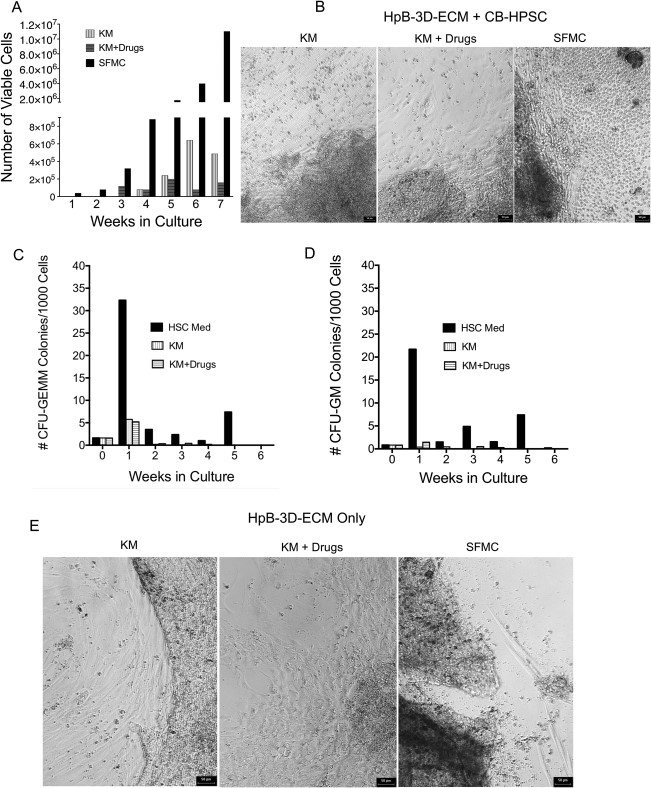 Despite advances in ex vivo expansion of cord blood-derived hematopoietic stem/progenitor cells (CB-HSPC), challenges still remain regarding the ability to obtain, from a single unit, sufficient numbers of cells to treat an adolescent or adult patient. We and others have shown that CB-HSPC can be ...
Despite advances in ex vivo expansion of cord blood-derived hematopoietic stem/progenitor cells (CB-HSPC), challenges still remain regarding the ability to obtain, from a single unit, sufficient numbers of cells to treat an adolescent or adult patient. We and others have shown that CB-HSPC can be ...
Safety and Observations from a Placebo-Controlled, Crossover Study to Assess Use of Autologous Umbilical Cord Blood Stem Cells to Improve Symptoms in Children with Autism
Michael Chez and others
Stem Cells Translational Medicine, Volume 7, Issue 4, April 2018, Pages 333–341, https://doi.org/10.1002/sctm.17-0042
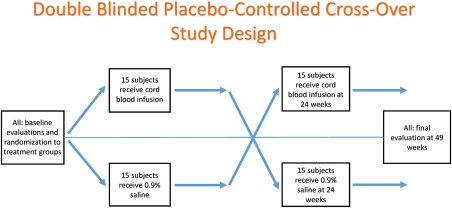 The aim of this exploratory study was to assess the safety and clinical effects of autologous umbilical cord blood (AUCB) infusion in children with idiopathic autism spectrum disorder (ASD). Twenty-nine children 2 to 6 years of age with a confirmed diagnosis of ASD participated in this randomized, ...
The aim of this exploratory study was to assess the safety and clinical effects of autologous umbilical cord blood (AUCB) infusion in children with idiopathic autism spectrum disorder (ASD). Twenty-nine children 2 to 6 years of age with a confirmed diagnosis of ASD participated in this randomized, ...
Ex Vivo Expansion of CD34+CD90+CD49f+ Hematopoietic Stem and Progenitor Cells from Non-Enriched Umbilical Cord Blood with Azole Compounds
Sudipto Bari and others
Stem Cells Translational Medicine, Volume 7, Issue 5, May 2018, Pages 376–393, https://doi.org/10.1002/sctm.17-0251
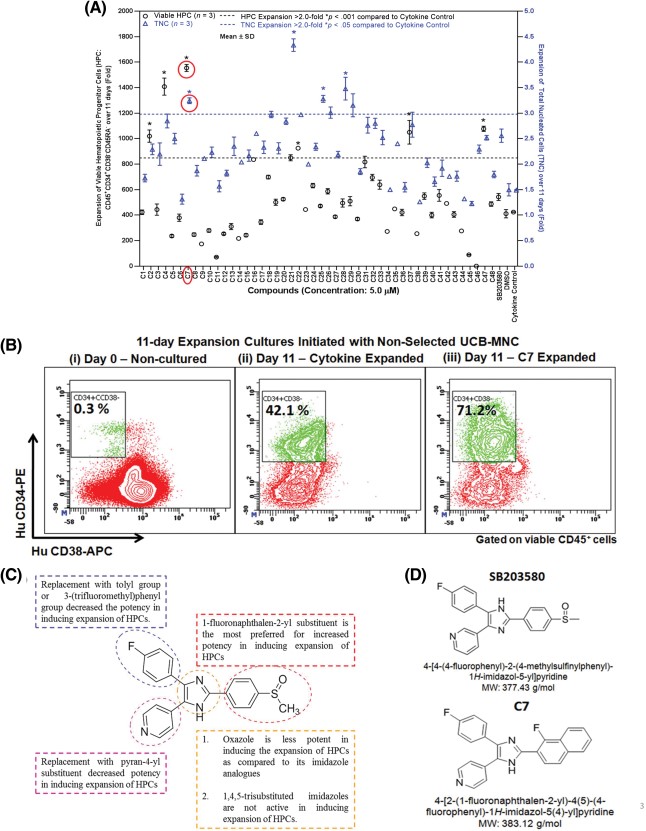 Umbilical cord blood (UCB) transplants in adults have slower hematopoietic recovery compared to bone marrow (BM) or peripheral blood (PB) stem cells mainly due to low number of total nucleated cells and hematopoietic stem and progenitor cells (HSPC). As such in this study, we aimed to perform ex ...
Umbilical cord blood (UCB) transplants in adults have slower hematopoietic recovery compared to bone marrow (BM) or peripheral blood (PB) stem cells mainly due to low number of total nucleated cells and hematopoietic stem and progenitor cells (HSPC). As such in this study, we aimed to perform ex ...
Risk of HLA Homozygous Cord Blood Transplantation: Implications for Induced Pluripotent Stem Cell Banking and Transplantation
Yasuo Morishima and others
Stem Cells Translational Medicine, Volume 7, Issue 2, February 2018, Pages 173–179, https://doi.org/10.1002/sctm.17-0169
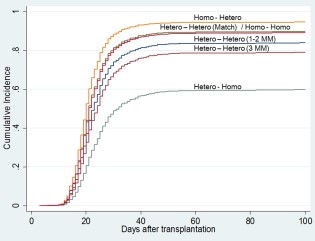 Clinical application of induced pluripotent stem cells (iPS) in autologous settings has just begun. To overcome the high time and cost barriers in the individual production of autologous iPS, the use of allogeneic iPS with a homozygous human leukocyte antigen (HLA) haplotype (HLA-homo HP) has been ...
Clinical application of induced pluripotent stem cells (iPS) in autologous settings has just begun. To overcome the high time and cost barriers in the individual production of autologous iPS, the use of allogeneic iPS with a homozygous human leukocyte antigen (HLA) haplotype (HLA-homo HP) has been ...
Preclinical Evaluation and Optimization of a Cell Therapy Using Human Cord Blood-Derived Endothelial Colony-Forming Cells for Ischemic Retinopathies
Emma Reid and others
Stem Cells Translational Medicine, Volume 7, Issue 1, January 2018, Pages 59–67, https://doi.org/10.1002/sctm.17-0187
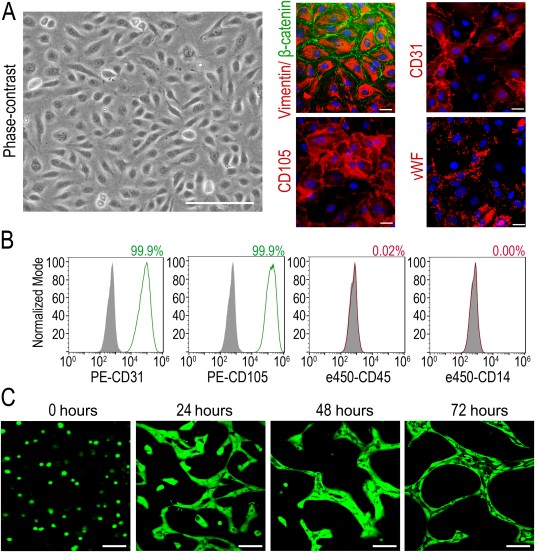 Cell therapy using endothelial progenitors holds promise for vascular repair in ischemic retinopathies. Using a well-defined subpopulation of human cord blood-derived endothelial progenitors known as endothelial colony-forming cells (ECFCs), we have evaluated essential requirements for further ...
Cell therapy using endothelial progenitors holds promise for vascular repair in ischemic retinopathies. Using a well-defined subpopulation of human cord blood-derived endothelial progenitors known as endothelial colony-forming cells (ECFCs), we have evaluated essential requirements for further ...
Effect of Autologous Cord Blood Infusion on Motor Function and Brain Connectivity in Young Children with Cerebral Palsy: A Randomized, Placebo-Controlled Trial
Jessica M. Sun and others
Stem Cells Translational Medicine, Volume 6, Issue 12, December 2017, Pages 2071–2078, https://doi.org/10.1002/sctm.17-0102
 Cerebral palsy (CP) is a condition affecting young children that causes lifelong disabilities. Umbilical cord blood cells improve motor function in experimental systems via paracrine signaling. After demonstrating safety, we conducted a phase II trial of autologous cord blood (ACB) infusion in ...
Cerebral palsy (CP) is a condition affecting young children that causes lifelong disabilities. Umbilical cord blood cells improve motor function in experimental systems via paracrine signaling. After demonstrating safety, we conducted a phase II trial of autologous cord blood (ACB) infusion in ...
Long-Term Recovery After Endothelial Colony-Forming Cells or Human Umbilical Cord Blood Cells Administration in a Rat Model of Neonatal Hypoxic-Ischemic Encephalopathy
Isabelle Grandvuillemin and others
Stem Cells Translational Medicine, Volume 6, Issue 11, November 2017, Pages 1987–1996, https://doi.org/10.1002/sctm.17-0074
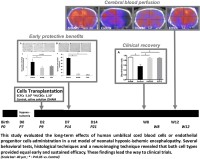 Neonatal hypoxic-ischemic encephalopathy (NHIE) is a dramatic perinatal complication, associated with poor neurological prognosis despite neuroprotection by therapeutic hypothermia, in the absence of an available curative therapy. We evaluated and compared ready-to-use human umbilical cord blood ...
Neonatal hypoxic-ischemic encephalopathy (NHIE) is a dramatic perinatal complication, associated with poor neurological prognosis despite neuroprotection by therapeutic hypothermia, in the absence of an available curative therapy. We evaluated and compared ready-to-use human umbilical cord blood ...
Platelet-Derived Mitochondria Display Embryonic Stem Cell Markers and Improve Pancreatic Islet β-cell Function in Humans
Yong Zhao and others
Stem Cells Translational Medicine, Volume 6, Issue 8, August 2017, Pages 1684–1697, https://doi.org/10.1002/sctm.17-0078
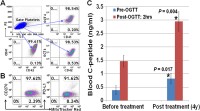 Diabetes is a major global health issue and the number of individuals with type 1 diabetes (T1D) and type 2 diabetes (T2D) increases annually across multiple populations. Research to develop a cure must overcome multiple immune dysfunctions and the shortage of pancreatic islet β cells, but these ...
Diabetes is a major global health issue and the number of individuals with type 1 diabetes (T1D) and type 2 diabetes (T2D) increases annually across multiple populations. Research to develop a cure must overcome multiple immune dysfunctions and the shortage of pancreatic islet β cells, but these ...
Large-Scale Ex Vivo Generation of Human Red Blood Cells from Cord Blood CD34+ Cells
Yu Zhang and others
Stem Cells Translational Medicine, Volume 6, Issue 8, August 2017, Pages 1698–1709, https://doi.org/10.1002/sctm.17-0057
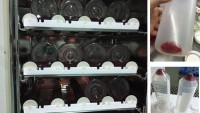 The ex vivo generation of human red blood cells on a large scale from hematopoietic stem and progenitor cells has been considered as a potential method to overcome blood supply shortages. Here, we report that functional human erythrocytes can be efficiently produced from cord blood (CB) CD34 + ...
The ex vivo generation of human red blood cells on a large scale from hematopoietic stem and progenitor cells has been considered as a potential method to overcome blood supply shortages. Here, we report that functional human erythrocytes can be efficiently produced from cord blood (CB) CD34 + ...
Autologous Cord Blood Infusions Are Safe and Feasible in Young Children with Autism Spectrum Disorder: Results of a Single-Center Phase I Open-Label Trial
Geraldine Dawson and others
Stem Cells Translational Medicine, Volume 6, Issue 5, May 2017, Pages 1332–1339, https://doi.org/10.1002/sctm.16-0474
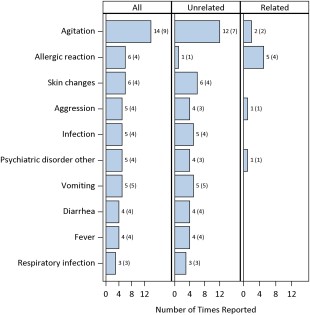 Despite advances in early diagnosis and behavioral therapies, more effective treatments for children with autism spectrum disorder (ASD) are needed. We hypothesized that umbilical cord blood-derived cell therapies may have potential in alleviating ASD symptoms by modulating inflammatory processes ...
Despite advances in early diagnosis and behavioral therapies, more effective treatments for children with autism spectrum disorder (ASD) are needed. We hypothesized that umbilical cord blood-derived cell therapies may have potential in alleviating ASD symptoms by modulating inflammatory processes ...
Advertisement
Advertisement

